Abstract
A systematic sequence of prompt and probe trials was used to teach picture names to three severely retarded children. On prompt trials the experimenter presented a picture and said the picture name for the child to imitate; on probe trials the experimenter did not name the picture. A procedure whereby correct responses to prompts and probes were nondifferentially reinforced was compared with procedures whereby correct responses to prompts and probes were differentially reinforced according to separate and independent schedules of primary reinforcement. In Phase 1, correct responses to prompts and probes were reinforced nondifferentially on a fixed ratio (FR) 6 or 8 schedule; in Phase 2, correct responses to prompts were reinforced on the FR schedule and correct responses to probes were reinforced on an FR schedule of the same value; in Phase 3, correct responses to prompts were reinforced on the FR schedule and correct responses to probes were reinforced on a continuous reinforcement (CRF; every correct response reinforced) schedule; in Phase 4, correct responses to prompts were reinforced on a CRF schedule and correct responses to probes were reinforced on the FR schedule; in Phase 5, a reversal to the conditions of Phase 3 was conducted. For all three children, the FR schedule for correct responses to prompts combined with the CRF schedule for correct responses to probes (Phases 3 and 5) generated the highest number of correct responses to probes, the highest accuracy (correct responses relative to correct responses plus errors) on probe trials, and the highest rate of learning to name pictures.
Full text
PDF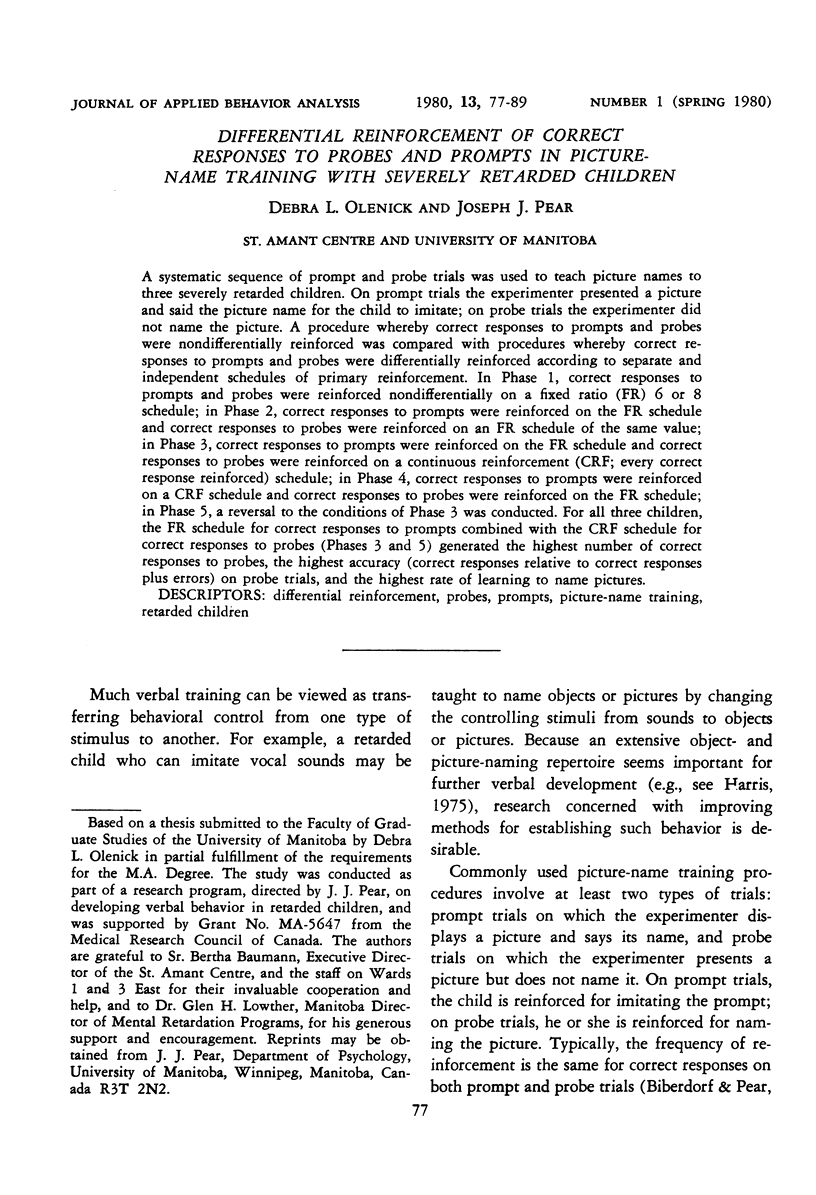

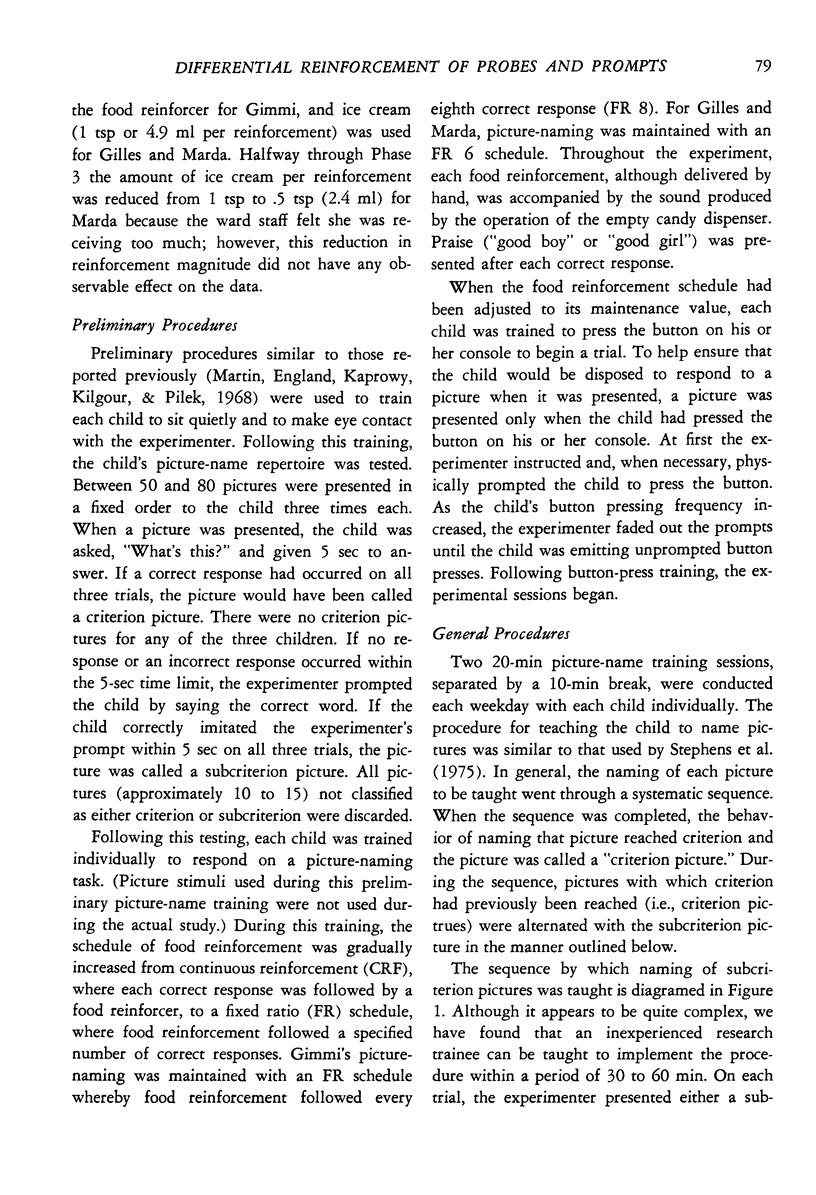
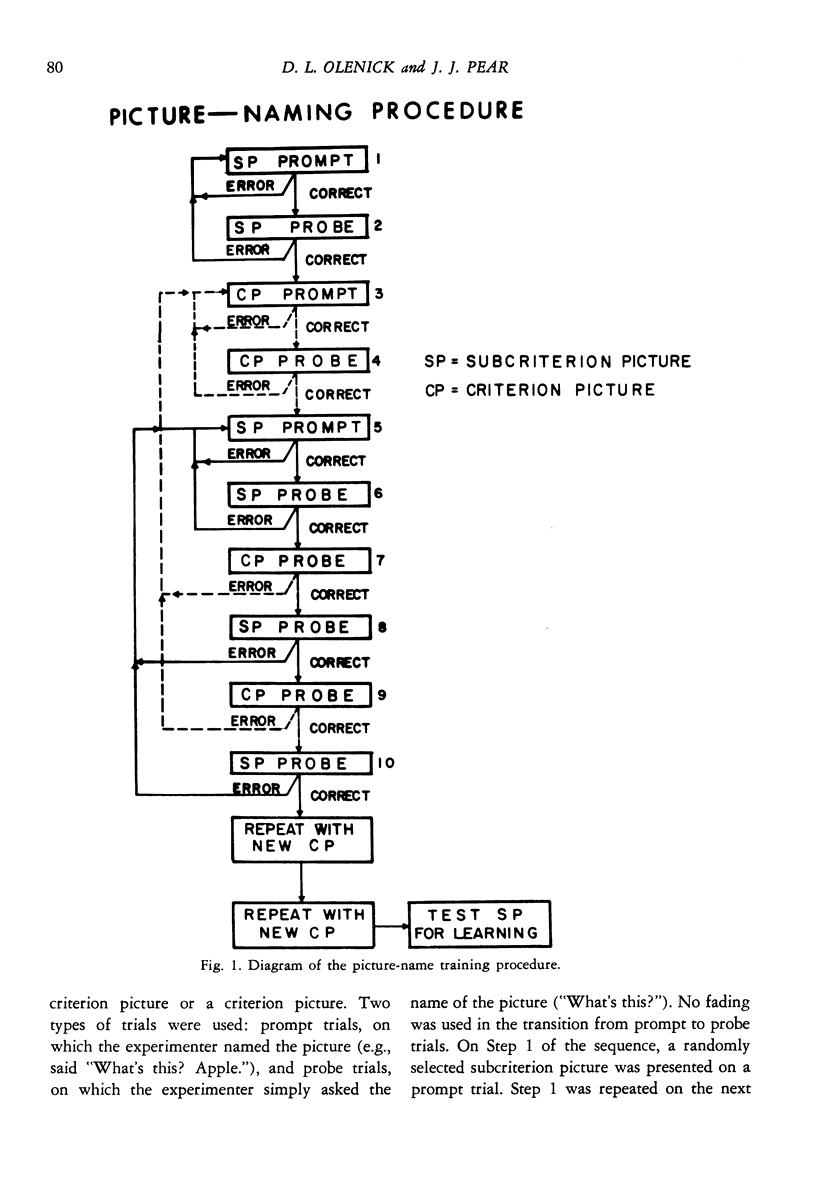
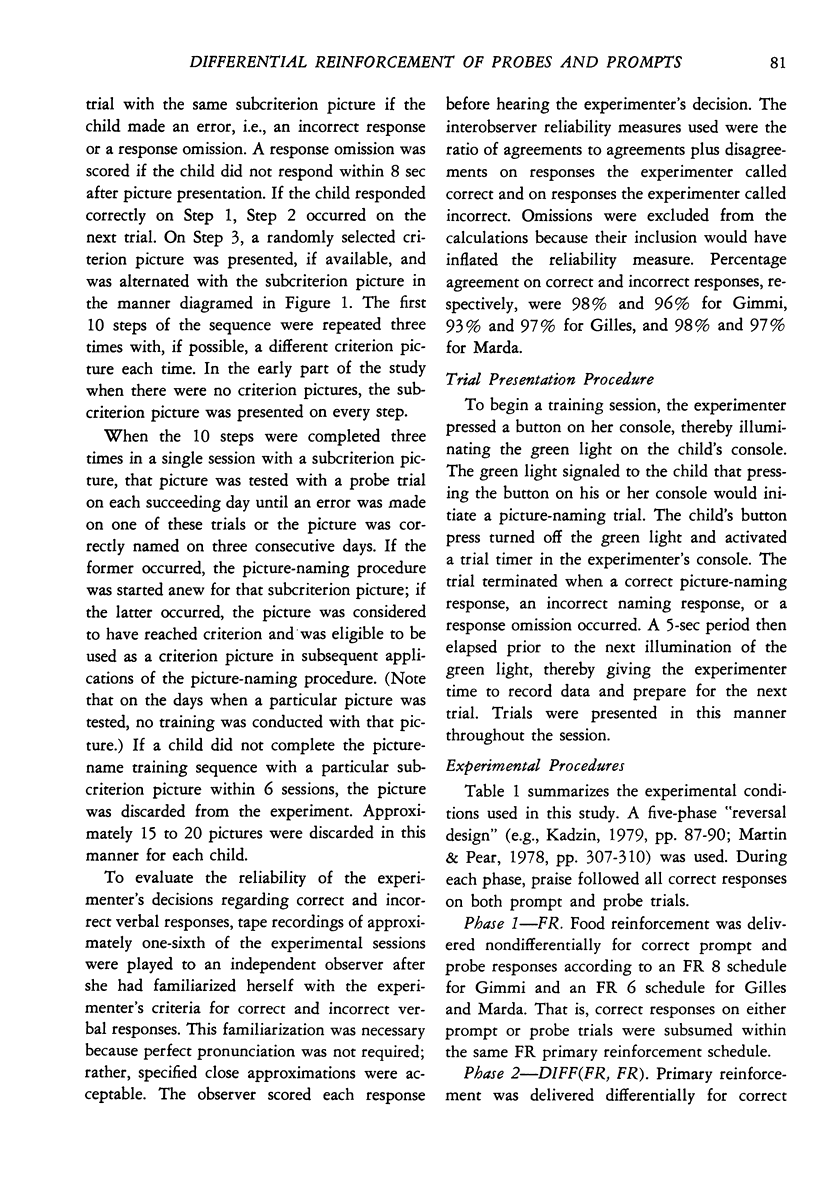
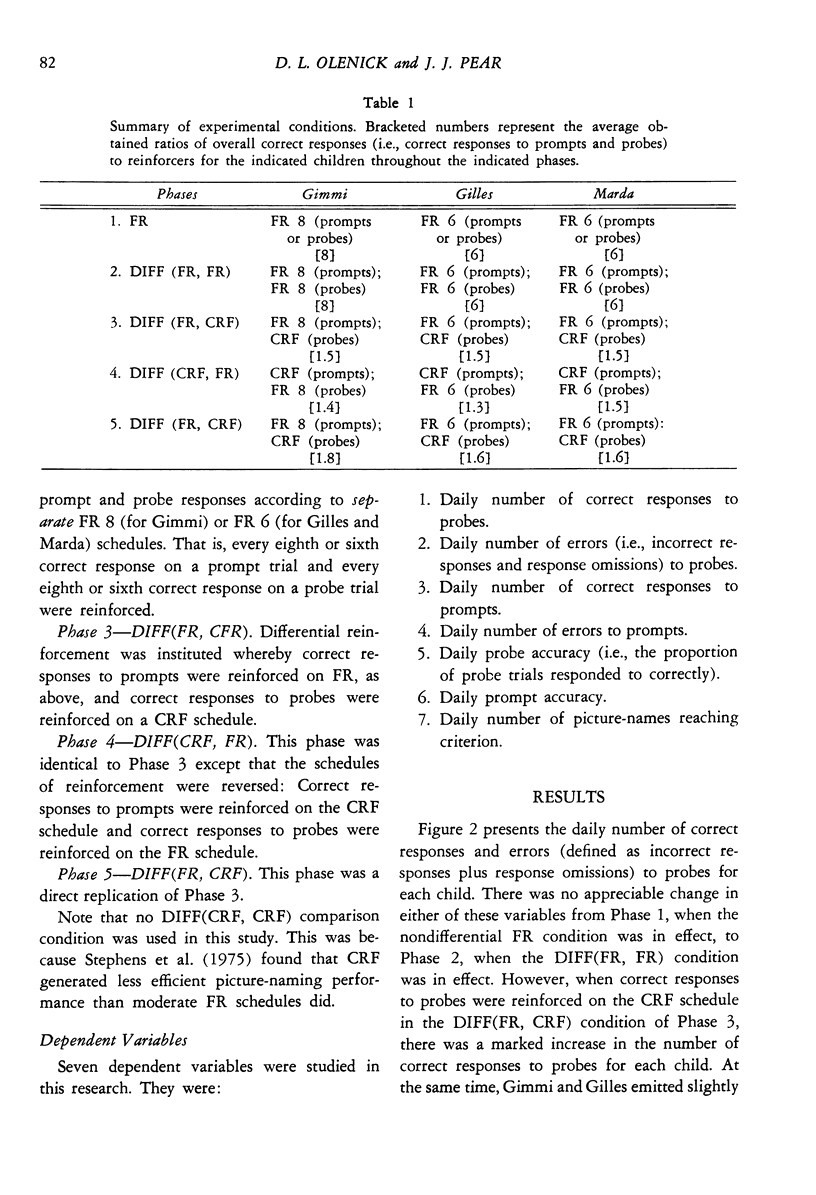
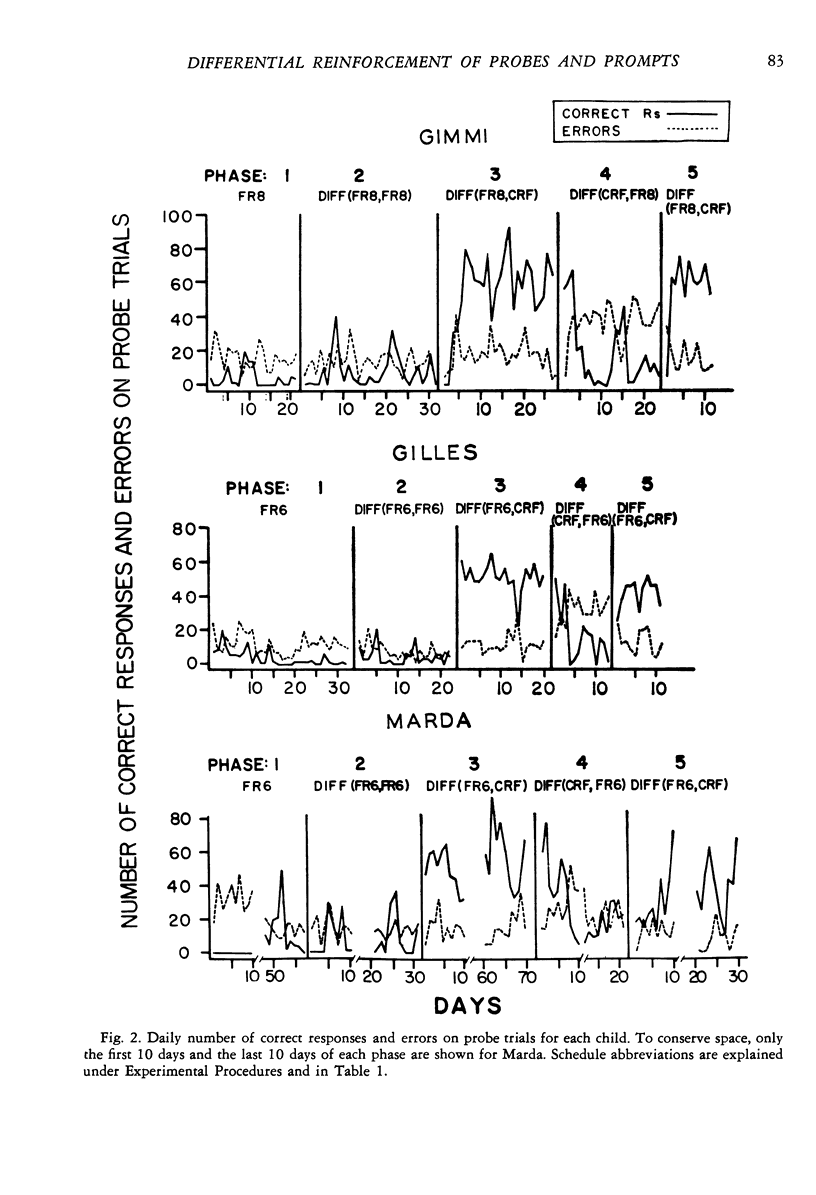
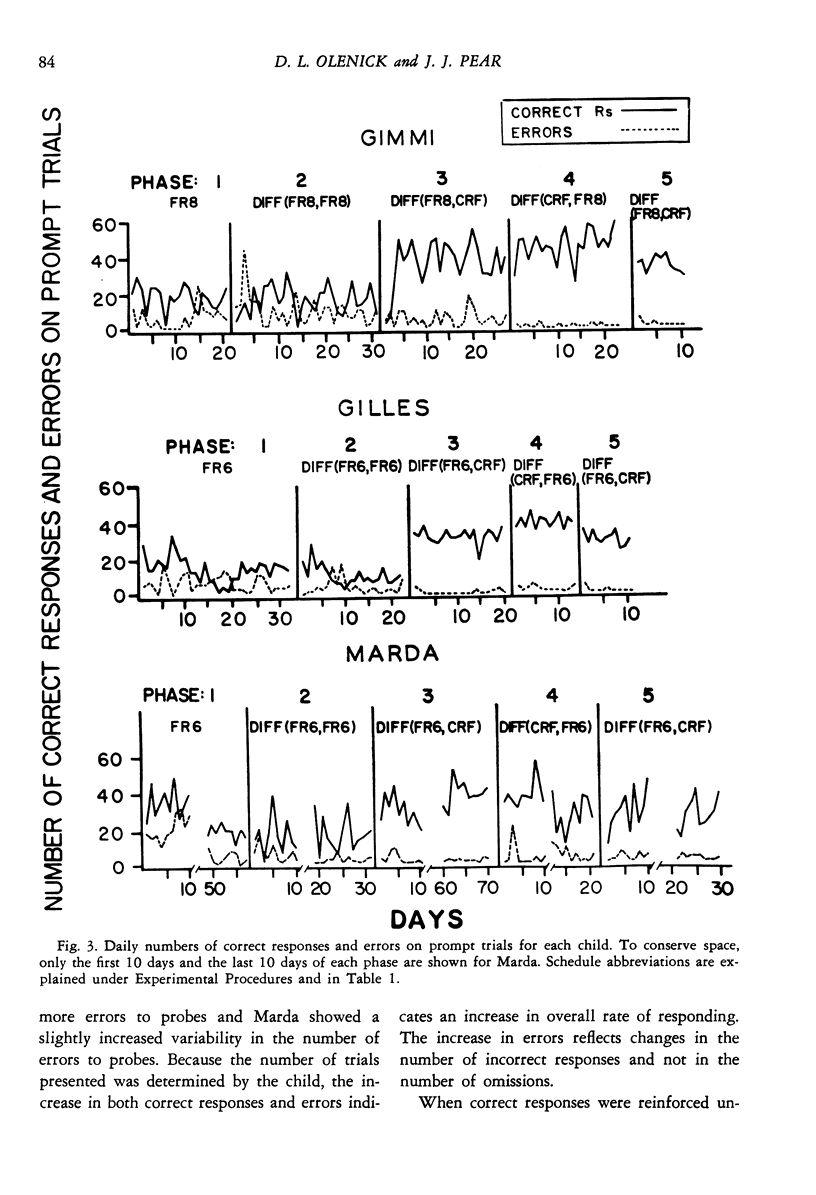
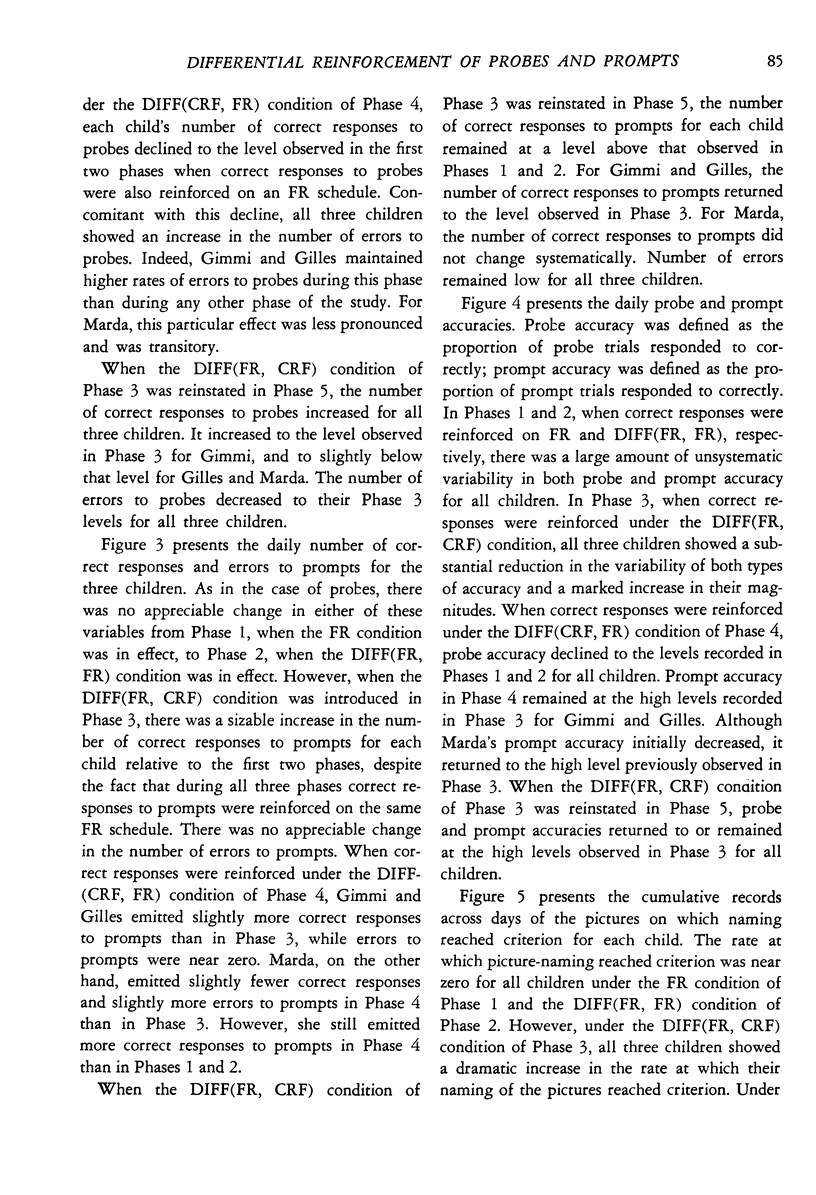
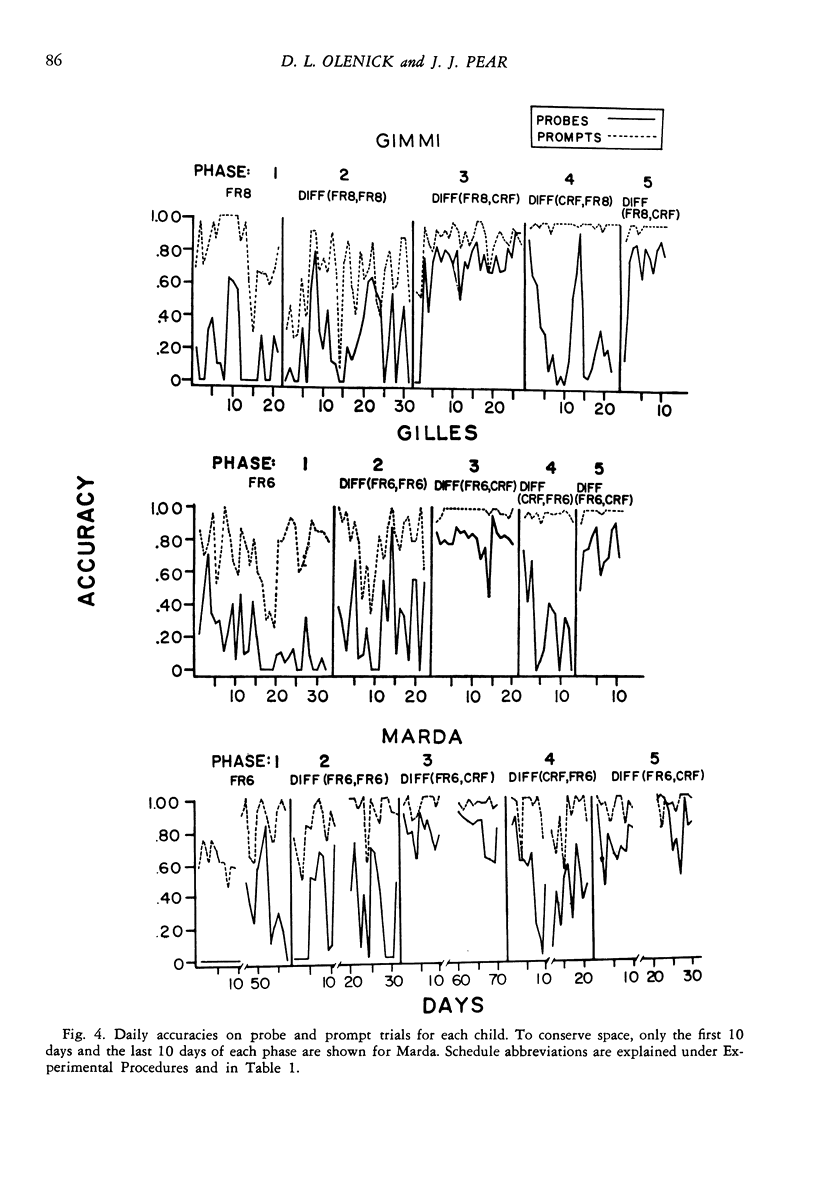
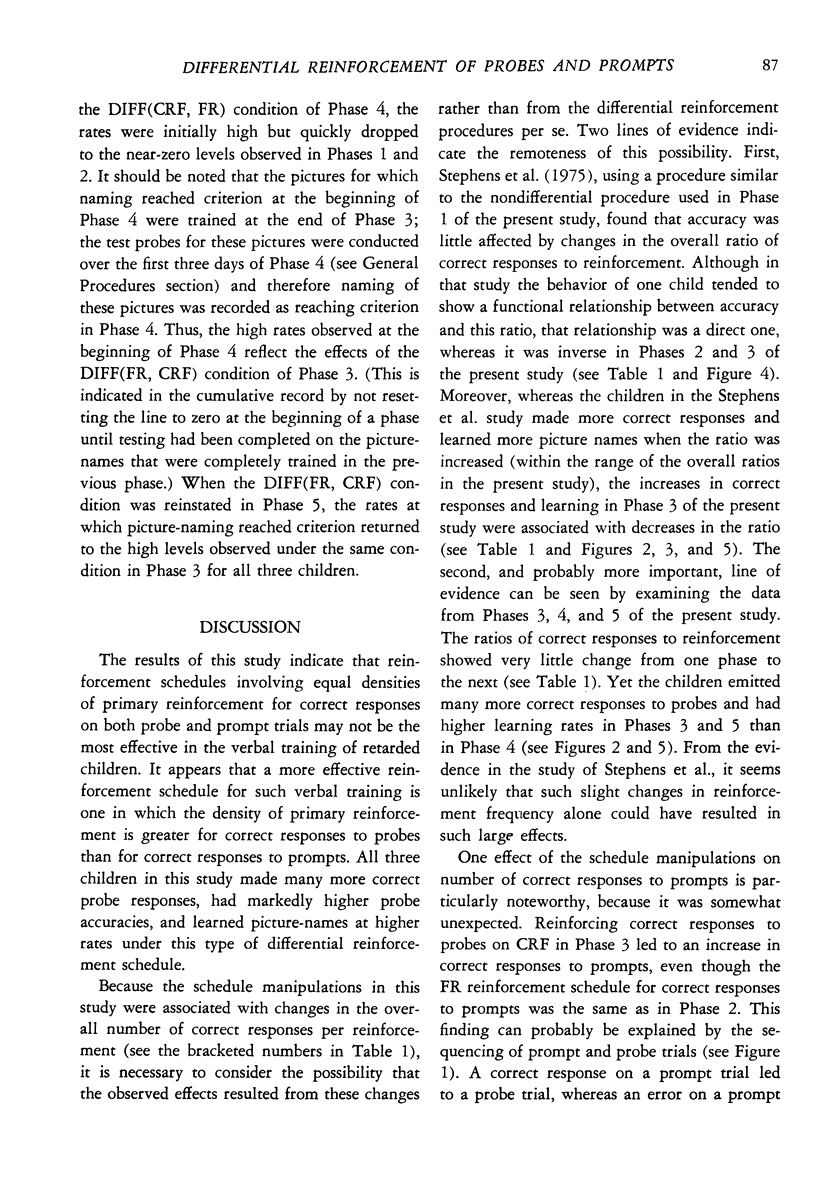
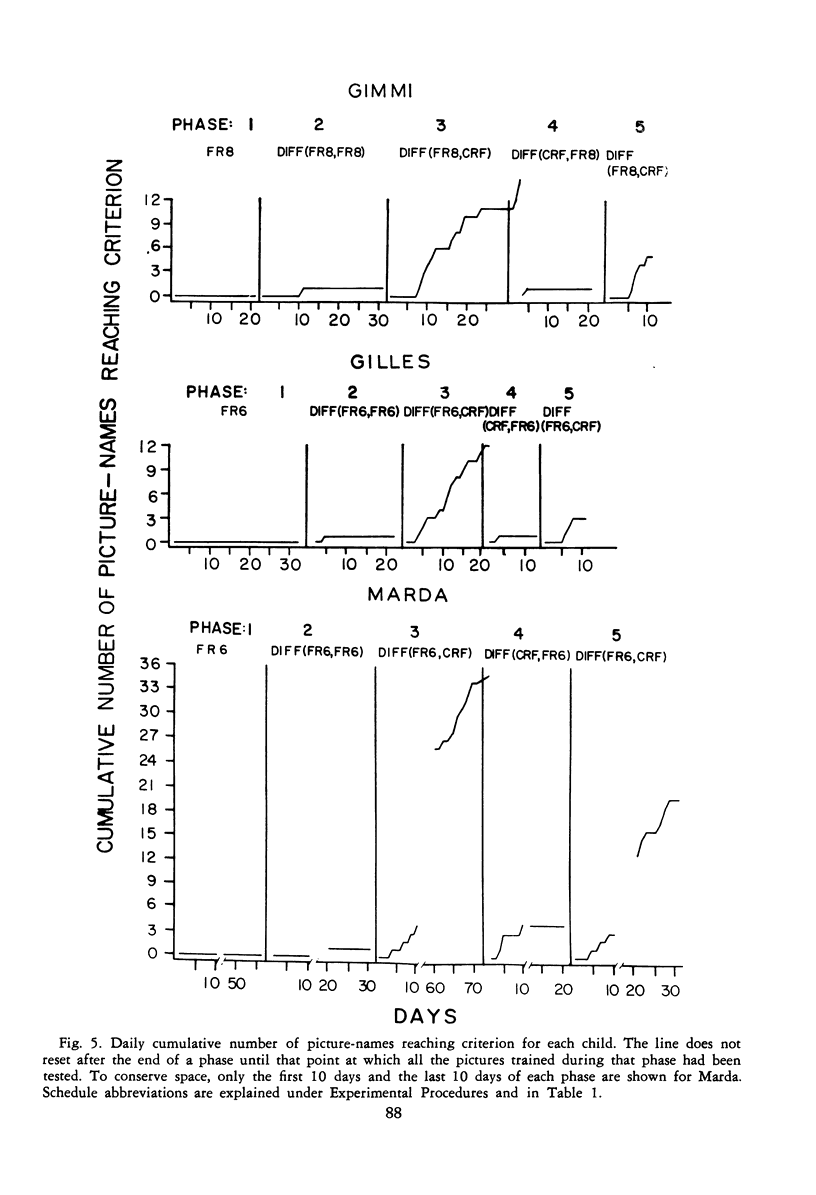
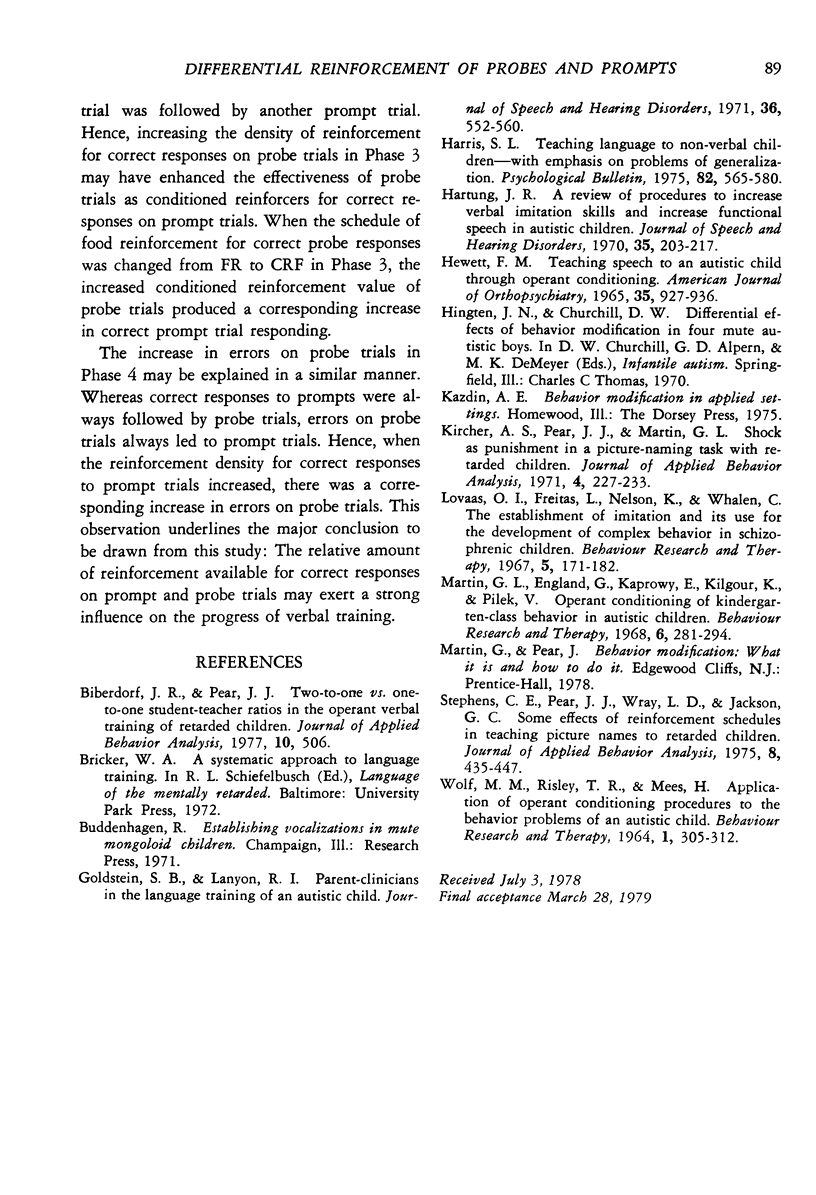
Selected References
These references are in PubMed. This may not be the complete list of references from this article.
- Biberdorf J. R., Pear J. J. Two-to-one versus one-to-one student-teacher ratios in the operant verbal training of retarded children. J Appl Behav Anal. 1977 Fall;10(3):506–506. doi: 10.1901/jaba.1977.10-506. [DOI] [PMC free article] [PubMed] [Google Scholar]
- Goldstein S. B., Lanyon R. I. Parent-clinicians in the language training of an autistic child. J Speech Hear Disord. 1971 Nov;36(4):552–560. doi: 10.1044/jshd.3604.552. [DOI] [PubMed] [Google Scholar]
- Harris S. L. Teaching language to nonverbal children--with emphasis on problems of generalization. Psychol Bull. 1975 Jul;82(4):565–580. doi: 10.1037/h0076903. [DOI] [PubMed] [Google Scholar]
- Hartung J. R. A review of procedures to increase verbal imitation skills and functional speech in autistic children. J Speech Hear Disord. 1970 Aug;35(3):203–217. doi: 10.1044/jshd.3503.203. [DOI] [PubMed] [Google Scholar]
- Hewett F. M. Teaching speech to an autistic child through operant conditioning. Am J Orthopsychiatry. 1965 Oct;35(5):927–936. doi: 10.1111/j.1939-0025.1965.tb00472.x. [DOI] [PubMed] [Google Scholar]
- Kircher A. S., Pear J. J., Martin G. L. Shock as punishment in a picture-naming task with retarded children. J Appl Behav Anal. 1971 Fall;4(3):227–233. doi: 10.1901/jaba.1971.4-227. [DOI] [PMC free article] [PubMed] [Google Scholar]
- Lovaas O. I., Freitas L., Nelson K., Whalen C. The establishment of imitation and its use for the development of complex behavior in schizophrenic children. Behav Res Ther. 1967 Aug;5(3):171–181. doi: 10.1016/0005-7967(67)90032-0. [DOI] [PubMed] [Google Scholar]
- Martin G. L., England G., Kaprowy E., Kilgour K., Pilek V. Operant conditioning of kindergarten-class behavior in autistic children. Behav Res Ther. 1968 Aug;6(3):281–294. doi: 10.1016/0005-7967(68)90062-4. [DOI] [PubMed] [Google Scholar]
- Stephens C. E., Pear J. J., Wray L. D., Jackson G. C. Some effects of reinforcement schedules in teaching picture names to retarded children. J Appl Behav Anal. 1975 Winter;8(4):435–447. doi: 10.1901/jaba.1975.8-435. [DOI] [PMC free article] [PubMed] [Google Scholar]


